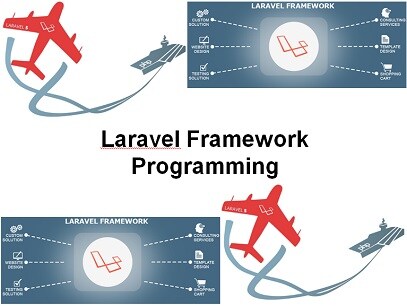- Leren door doen
- Trainers met praktijkervaring
- Klassikale trainingen
- Gedetailleerd cursusmateriaal
- Duidelijke inhoudsbeschrijving
- Maatwerk inhoud mogelijk
- Trainingen die doorgaan
- Kleine groepen
In de cursus Laravel Framework Programmeren leren de deelnemers moderne PHP applicaties te bouwen met de nieuwste versie van het state of the art framework Laravel.
Laravel heeft zich de laatste jaren ontwikkeld tot een van de meest populaire PHP frameworks. Dit is te danken aan het gebruiksgemak, de expressieve syntax, het dependency injection mechanisme en de rechtstreeks inzetbare componenten.
In de cursus leert u Laravel te installeren en een omgeving to prepareren voor applicatie ontwikkeling. Aan de orde komen Laravel's routing architecture , het opvangen van requests en het genereren van responses.
Ook Laravel's Model View Controller architecture en Forms en validatie worden daarbij besproken.
Vervolgens wordt aandacht besteed aan database access in Laravel en Object Relational Mapping met Laravel's ORM Eloquent.
Tenslotte komen ook geavanceerde onderwerpen zoals authenticatie en security aan bod. Aan het eind van de cursus heeft u verschillende cases studies met Laravel doorlopen en kunt u robuuste Web sites met Laravel maken.
PHP developers die robuste en onderhoudbare Web Applications willen ontwikkelen met het Laravel PHP Framework.
Ervaring met PHP Programmeren en Web Development met PHP is vereist om aan deze cursus te kunnen deelnemen.
De theorie wordt behandeld aan de hand van presentatie slides. De concepten worden toegelicht met demo's. De theorie wordt afgewisseld met oefeningen. De cursustijden zijn van 9.30 tot 16.30.
De deelnemers krijgen na het goed doorlopen van de cursus een officieel certificaat Laravel Framework Programming.

Module 1 : Laravel Intro |
Module 2 : Routing |
Module 3 : Controllers and Filters |
|
Laravel Installation Creating a Laravel project Laravel Structure Overview Project Structure Facades MVC Pattern Dependency Injection Routing Annotations Lavarel Versions Introducing Composer Using Homestead |
Laravel Request Lifecycle Basic Routing Route Parameters Restricting Parameters Handling HTTP Exceptions Returning Responses Views View Data Redirects Custom Responses Resource Controllers Blade Templates |
Creating Controllers Controller Routing Controller to Command Command to Event Queued Event Handlers Nested Controllers Route Caching RESTful Controllers Basic Filters Multiple Filters Filter Classes Global Filters |
Module 4 : Forms and Validation |
Module 5 : Database Access |
Module 6 : Eloquent ORM |
| Master Template Forms and form tag Text and labels Buttons Closing the Form Security Validation Rules Error Messages Custom Rules Custom Message Generating Framework URLS Generation Shortcuts |
Abstraction Configuration Preparing Creating Tables Column Types Special Column Types Column Modifiers Updating Tables Dropping Tables Basic Concept Creating Migration Rolling Back Migration Tricks |
Creating new model Reading Existing Models Updating Existing Models Deleting Existing Models Queries Preparation Eloquent to string Query Structure Magic Queries Query Scopes Relationships Implementing Relationship Relating and Querying |
Module 7 : Rest API |
Module 8 : Authentication and Security |
|
| Rest Services Resource ID’s Create and Update Read and Delete List Pagination Model Binding Nested Controllers Beyond CRUD Nested Update Nested Create |
Authenticating users User model Authenticating routes Authenticating views Validating user Input Avoiding mass assigment Cross Site Scripting Cross Site Request Forgery SQL Injection Forcing HTTPS |
